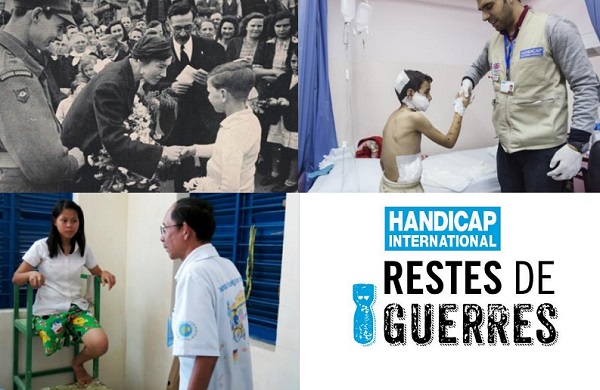
As part of the centenary of the of the First World War and the 70th anniversary of World War II, Handicap International will be launching a public exhibition in Place Clairefontaine of Luxembourg City this Thursday 19 November 2015.
Through the project, entitled 'Restes de guerres' ('War Remnants'), the association will be highlighting the consequences of the two European conflicts, on the one hand to explore how they created civilian casualties in the Greater Region, and on the other to demonstrate the current relevance of civilian victims of explosive remnants in view of the zones of conflict in which Handicap International continues to intervene.
Through 'War Remnants', Handicap International Luxembourg will aim to give a voice and face to the victims and survivors of deadly weapons such as landmines, cluster bombs, shells, grenades and other explosive remnants which threaten the lives of local people. The exhibition will also serve as a condemnation of bombings in densely populated areas which are conducted with no distinction between civilians and combatants. This practice, involving the deliberate targeting of civilian areas, is a violation of the law of war.
By combining visual archives from the Greater Region and photographs of Handicap International's field missions, the exhibition joins past and present, showing what has been and what will continue to be if these issues are not addressed. In Luxembourg, decades after the World Wars I and II, an average of five tonnes of unexploded ordnance is discovered every year. Worldwide, this figure rises to several million tonnes.
The exhibition will be available in the four languages of English, French, German and Luxembourgish from November 2015 in Luxembourg City. At 14:00 on Thursday the organisation will be conducting a guided tour in the presence of students and teachers from the Lycée Technique Michel Lucius, the Lycée Français Vauban and the French primary school.
Photos by Handicap International / B&W photo by Ville de Luxembourg/Tony Krier








